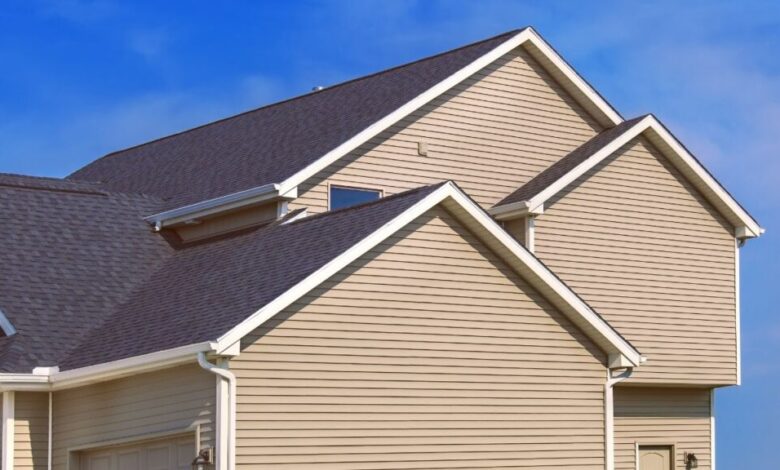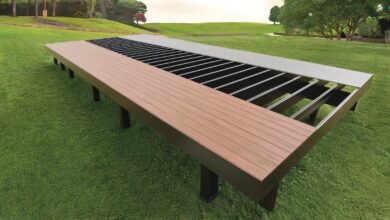Siding Replacement Services | Factors That Affect the Costs

Exploring the Factors Behind Siding Replacement Costs
Giving your home a well-deserved facelift with new siding is a fantastic way to boost curb appeal and shield it from the elements. However, like any home improvement project, siding replacement involves a significant financial investment.
Before you jump into transforming your home’s exterior, it’s critical to understand the factors that affect the overall price of siding replacement services. This comprehensive guide will break down those elements, equipping you with the knowledge to make informed choices and achieve your desired results without financial strain.
Project Extent and Complexity
Your house’s size and architectural intricacies significantly impact the overall cost.
- Square Footage
The larger your home’s exterior, the more material and labor will be required, directly impacting the final price. The average expense per square foot is from $5 to $15.
- Architectural Complexity
Intricate designs, multiple stories, dormers, and other architectural flourishes add complexity to the installation process, often requiring more skilled labor and time. The price increase can be 10% to 20%.
- Accessibility Challenges
Obstacles like uneven terrain, dense landscaping, or limited access points can slow down the project and increase labor costs from 5% to 10%.
Existing Siding Removal
Factor in the fee of saying goodbye to your old siding. Its condition and the removal process can also significantly sway your project budget.
- State of Current Material
If it is severely damaged, requires extensive repairs, or contains hazardous materials like asbestos, taking the siding off becomes more complex and costly. You can expect a price increase for difficult removal from 10% to 20%.
- Clearing Methods
Simple tear-offs are generally faster and more affordable. However, specialized tools and techniques might be necessary for delicate removals or historical preservation. The average cost difference is between $500 and $1,000.
Siding Type
When choosing the material, carefully weigh your budget, desired aesthetic, and maintenance preferences. Each has its pros, cons, and price points. Let’s explore some popular options:
- Vinyl
Reigning supreme in affordability and low-maintenance appeal, vinyl siding is a crowd favorite. It’s available in various colors and styles to suit different aesthetics. It can go from $3,000 to $7,000.
- Fiber Cement
If durability, fire resistance, and termite-proofing are top priorities, fiber cement siding is your go-to. It mimics the look of wood without the demanding upkeep. The value can be from $8,000 to $15,000.
- Wood
The classic charm of wood siding is undeniable. However, it requires more maintenance and has a higher price tag, ranging from $10,000 to $20,000.
- Metal
For those seeking longevity and minimal upkeep, metal siding, often in steel or aluminum, is an excellent choice. It’s also energy-efficient, potentially leading to long-term savings. It can go from $8,000 to $15,000.
- Brick or Stone
These materials exude luxury and permanence but are expensive. They require minimal care and offer exceptional durability, costing between $20,000 to $40,000.
Inspections and Permits
Most municipalities require warrants and assessments for siding replacement projects to guarantee compliance with safety standards and building codes.
- Local Regulations
Permitting requirements and associated fees vary depending on your location. On average, expect to pay between $500 and $2,000.
- Inspection Fees
While they add an extra layer of expenditure, they provide peace of mind and protect your investment. Expect a 5-10% increase in the overall expense.
Labor and Expertise
Skilled work is essential for a successful replacement. Several factors influence labor costs, which can vary significantly.
- Local Market Rates
This factor fluctuates based on your location, the cost of living, and the demand for skilled tradespeople in your area. On average, the price per hour is $50 to $100.
- Experience Level
Highly skilled contractors often have higher fees but bring extensive knowledge and precision to the project, ensuring a flawless finish. Generally, the price increase can range from 10% to 20%.
- Project Complexity
Elaborate architectural designs or challenging site conditions demand more skilled labor and time, potentially adding 20-30% to your overall costs.
Additional Expenditures
Keep in mind that your project might also include expenses such as:
- Insulation Upgrades
Boosting your home’s energy efficiency with new insulation during siding replacement is wise. While it requires an initial investment of $2,000–$5,000, this upgrade can lead to significant long-term savings by reducing monthly energy bills.
- Landscaping Needs
Removing obstacles like shrubs or bushes might be necessary to provide clear access for the installation. Budget around $1,000–3,000 to restore your yard’s beauty afterward.
- Window and Door Replacements
If you plan to replace windows or doors, coordinating these projects with your siding replacement can streamline the process and save on labor costs. Expect to budget an additional $5,000–10,000 for this upgrade.
Conclusion
Investing in new siding significantly enhances your home’s curb appeal, protection, and value. With knowledge of these cost factors, you can confidently discuss your ideas with reputable installers and make informed decisions that align with your vision and budget.
Contact a reputable exterior home renovation contractor specializing in siding replacement services today. They can provide expert guidance, a personalized assessment of your needs, and a detailed estimate to start your project on the right foot.




